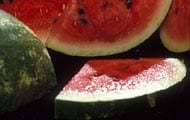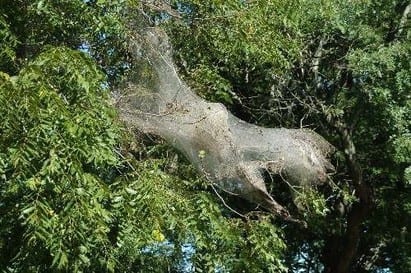Posted in September You Asked It!
 This summer, pre-cut melons were recalled due to Salmonella contamination. This included pre-cut cantaloupe, watermelon, and a fruit salad mix sold in grocery stores in nine states. While Salmonella is usually connected to meat, poultry, or eggs, it may seem unusual for melons. But, melons are not like many other fruits.
This summer, pre-cut melons were recalled due to Salmonella contamination. This included pre-cut cantaloupe, watermelon, and a fruit salad mix sold in grocery stores in nine states. While Salmonella is usually connected to meat, poultry, or eggs, it may seem unusual for melons. But, melons are not like many other fruits.
Most fruits are considered high acid, or low in acidity with a pH averaging between 3.0 and 4.0. Melons have a pH between 5.0 and 7.0. This makes them a low acid food. Salmonella thrives in a pH range of 4.1-9.0. So melons can support the growth of Salmonella. It can also grow in a temperature range of 43-115°F. Therefore, in this recall, if temperature abuse occurred at any point, Salmonella would grow.
Good handling practices are your best defense. Always scrub and wash melons before cutting them open. Store cut fruit in the refrigerator. Keep it separate from raw meat, poultry, seafood, or eggs. Use clean utensils to serve fresh melons. Wash your hands before and after handling melons or other produce. When buying pre-cut melons or other fresh produce, be sure they are cold and refrigerate promptly.
Sources:
www.cdc.gov/salmonella/adelaide-06-18/index.html
https://food.unl.edu/salmonella
www.fightbac.org/wp-content/uploads/2015/08/ConsumerFact_Sheet.pdf
By: Ashley Svaty
 Fall webworm feeds on almost all fruit, shade, and ornamental trees except conifers. This insect is present more often on trees that are not surrounded by other trees. The larvae begin by constructing small webs near the ends of branches. The insect will gradually increase the size of the web as the need for food increases.
Fall webworm feeds on almost all fruit, shade, and ornamental trees except conifers. This insect is present more often on trees that are not surrounded by other trees. The larvae begin by constructing small webs near the ends of branches. The insect will gradually increase the size of the web as the need for food increases.